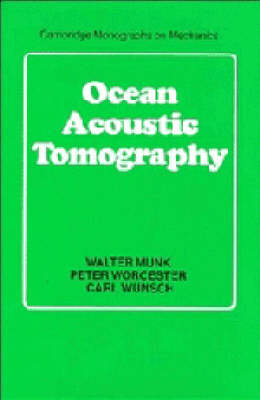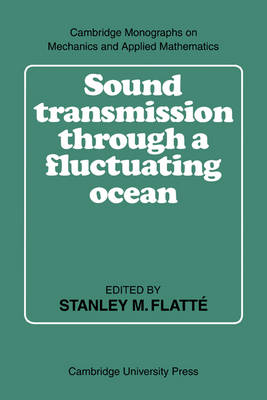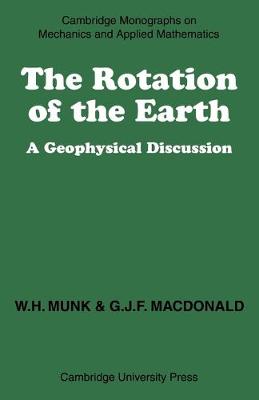Cambridge Monographs on Mechanics
3 total works
Ocean Acoustic Tomography
by Walter H. Munk, etc., Peter Worcester, and Carl Wunsch
Published 30 June 1995
The problem of ocean acoustic tomography is to infer from precise measurements of travel time, or other properties of acoustic propagation, the state of the ocean traversed by a sound field. Tomography takes advantage of two facts: that travel time and other measurable acoustic parameters are functions of temperature, water velocity, and other parameters of oceanographic interest, and can be interpreted to provide information about the intervening ocean using inverse methods; and that the ocean is virtually transparent to low-frequency sound, so that signals can be transmitted over distances of many thousands of kilometres. It is therefore possible to prepare a practical system of transmitters and receivers to interpret the behaviour of the oceans. This book gives a comprehensive presentation of the underlying oceanography and mathematics necessary to understand and develop such a system. It covers the forward and inverse tomography problem, as well as numerous models for data interpretation. Also included is an epilogue outlining the history of tomographic techniques. It should prove a valuable resource to oceanographers and climatologists, as well as applied mathematicians and engineers interested in applications of fluid mechanics tools.
Sound Transmission through a Fluctuating Ocean
by Roger Dashen, Walter H. Munk, Kenneth M Watson, and Frederik Zachariasen
Published 29 June 1979
The ocean is transparent to sound where slight irregularities within the ocean cause sound fluctuations, and thus set limits on the many uses of sound in the ocean, similar to the limits imposed by the atmosphere on ground-based telescopes. This 1979 book attempts to connect the known structure of the ocean volume with experimental results in long-range sound transmission. Theories of wave propagation through irregular media, developed for optical and radio wave transmission are found to be inapplicable in many respects due to the complications of ocean structure, particularly the combination of anisotropy and 'sound channel'. The authors extend wave propagation theory to account for the ocean complications and introduces the path-integral approach to the solution of the strong-scattering regime that solves many long-standing problems. The book is written at the post-graduate level, but has been carefully organised to give experimenters a grasp of important results without undue mathematics.
This book gives an account of certain observed irregularities on the rotation of the Earth, both in its rate of rotation (giving a variable length of day) and in the position of its axis. These irregularities are caused by events on and within the Earth and provide a means of studying a number of geophysical problems. Seasonal shifts in air masses and variable winds are causes of short-period fluctuations in the rotation. Climatic changes and their attendant sea levels are in part responsible for long-term fluctuations. Modern observations of the Moon and descriptions of ancient elipses both establish a secular increase in the length of day. The interpretation involves atmospheric, oceanic and bodily tides. The book provides a unified treatment of the rotation of the Earth, making this method of studying geophysical phenomena more readily accessible to geophysicists and others.


